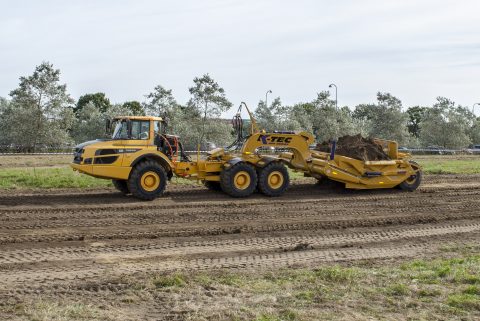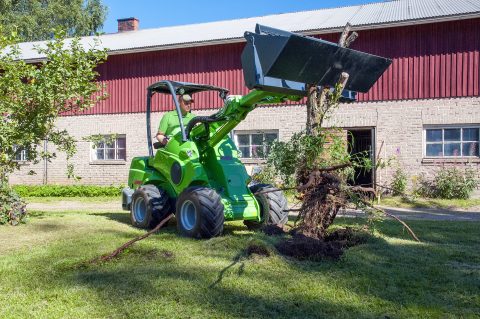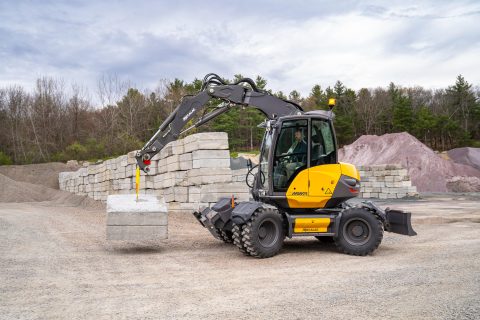2025 Construction Industry Trends – Mid-Year Check-In
At the start of the year, we posted a blog discussing the projected outlook for the construction industry in 2025. The evolving economic, technological and political landscapes that have been shaping 2025 make it a pivotal year for our industry, and it’s critical for you to understand the dynamics that are driving the conditions your construction business is facing.
We’ve reached the halfway point of the year, making it a great time to revisit the trends we identified in January to see if they’ve developed in the way we predicted.
Economic Context
In January, we predicted that the construction industry would continue its recovery from disruptions caused by the COVID-19 pandemic. Economic projections from the Bureau of Labor Statistics estimated that:
- The construction sector would grow by approximately 4% in 2025
- GDP growth would range from 2.1% to 2.5% in 2025
- An influx of federal funding from the Bipartisan Infrastructure Law would stimulate demand for construction services
How have these predictions held up so far?
Economic uncertainty fueled by tariffs, sweeping changes in immigration policies and fears of a recession have dampened this optimism considerably. Current estimates for 2025 place GDP growth at 1.2%, which is significantly lower than anticipated. In addition, total construction activity is 13% lower than it was midyear 2024, indicating that the construction sector may decline rather than grow this year.
The one positive that has held firm in our predictions is that currently, federal infrastructure spending from the Bipartisan Infrastructure Law remains robust and is continuing nearly as anticipated. The law authorized approximately $1.2 trillion over the next five years for a wide range of projects, and this is helping to keep the construction industry afloat amid the uncertain economic climate we’re currently facing.
Housing Market Dynamics
 In January, we highlighted some of the changes that the residential construction sector was going through. Challenges associated with rising interest rates and material costs were impacting the industry; however, the strong demand for housing was expected to result in moderate increases in new housing projects. This led us to predict single-family home construction would experience a recovery this year.
In January, we highlighted some of the changes that the residential construction sector was going through. Challenges associated with rising interest rates and material costs were impacting the industry; however, the strong demand for housing was expected to result in moderate increases in new housing projects. This led us to predict single-family home construction would experience a recovery this year.
Additional predictions included:
- Rising housing costs and zoning regulations may limit the ability to develop housing projects in certain areas
- The increase in remote work would impact housing demand patterns, causing many families to prioritize larger homes in suburban or rural areas
How accurate were these predictions?
Currently, we’re seeing some growth in the residential construction industry, but it is very modest. At its current rate, residential construction is expected to grow 0.9% for 2025, with a slightly larger uptick to 1.1% in 2026. According to the June 2025 new residential construction report released by the U.S. Census Bureau, single family permits were down 3.7% from May to June while housing starts were down 4.6% last month. This may indicate that a slowdown in residential construction may be on the horizon.
The expected trends of families leaving cities for suburban and urban locations have held true so far in 2025. According to industry surveys, the primary factors driving this trend include greater affordability, the ability to have more space and lifestyle benefits associated with living in these regions.
Labor Challenges
At the start of the year, labor shortages were expected to impact the construction industry in 2025. Currently, that prediction has held true. The most recent surveys have shown that 94% of construction firms are struggling to fill craft labor jobs. The country’s current immigration policies have exacerbated many of the labor challenges predicted at the start of the year.
We’re seeing a variety of the workforce development responses identified in January being implemented right now, including greater investments in training programs, career readiness initiatives and improved working conditions.
Technological Innovations
 We predicted that widespread adoption of Building Information Modeling (BIM), virtual reality (VR) and augmented reality (AR) technology would dramatically change the construction landscape this year, allowing projects to be completed with reduced costs and tighter timelines. In addition, we predicted an increase in the use of prefabrication and modular construction throughout the industry due to their sustainability and efficiency benefits.
We predicted that widespread adoption of Building Information Modeling (BIM), virtual reality (VR) and augmented reality (AR) technology would dramatically change the construction landscape this year, allowing projects to be completed with reduced costs and tighter timelines. In addition, we predicted an increase in the use of prefabrication and modular construction throughout the industry due to their sustainability and efficiency benefits.
So far, we’ve seen an expansion in the use of BIM, AR and VR technology as expected. These technologies are allowing construction companies to achieve more precise, collaborative, safe and cost-effective projects. BIM technology has also played a critical role in the increasing usage of prefabrication and modular construction across the industry, as this prediction has held up as well.
Sustainability and Green Building
At the start of the year, all signs pointed to an increase in green building initiatives, with investments in sustainable materials and energy-efficient designs becoming increasingly common. This prediction has been holding up well, as the green building sector is one of the fastest growing segments in the U.S. construction industry. The green building market reached $228.33 billion this year and is expected to achieve a CAGR of 10.57% through 2030.
This growth has persisted despite uncertainty regarding federal green building policies, largely due to the fact that many cities and states are moving forward with green building requirements that were currently in place prior to the new administration taking power. As of May 2025, the surface area of LEED Platinum-certified buildings, which represents the highest level of sustainability certification, reached 667 million square feet, up from 626 million square feet from the previous year. This figure is one of the many signs that green building initiatives throughout the country are continuing to thrive as expected.
McClung-Logan Can Help You Navigate the Current Issues Impact the Industry
 As your construction business navigates the many challenges and opportunities presented by the state of the industry in 2025, it’s important to have a dedicated partner who can provide you with the construction equipment you need to complete your projects. As the leading construction equipment dealer in the Mid-Atlantic region since 1939, McClung-Logan can ensure your team is equipped for any job you take on.
As your construction business navigates the many challenges and opportunities presented by the state of the industry in 2025, it’s important to have a dedicated partner who can provide you with the construction equipment you need to complete your projects. As the leading construction equipment dealer in the Mid-Atlantic region since 1939, McClung-Logan can ensure your team is equipped for any job you take on.
We offer a wide range of new and used construction equipment for sale, as well as a large fleet of rental equipment. Our inventory includes the latest models of high-performance machinery from many of the leading brands, including:
- Volvo
- Takeuchi
- Mecalac
- Avant
- K-Tec
- Prinoth
- Gradall
- Shuttlewagon
- Dura-A-Lift
With our Simply Done Right Service™ Pledge, you’ll have peace of mind that comes with a dedicated partner who is truly committed to your success. As part of our exclusive pledge, we’ll go the extra mile for you in a variety of ways, including:
- 24/7 assistance
- Extensive inventory on hand to ensure you receive any parts as quickly as possible
- Communication in your preferred method (phone, text or email)
- Highly trained service team
- Loaner equipment, whenever possible, to minimize downtime while your machines are serviced or repaired
Contact one of our ten branch locations to speak with a sales representative. McClung-Logan is a full-service construction equipment dealer serving the Mid-Atlantic region.
